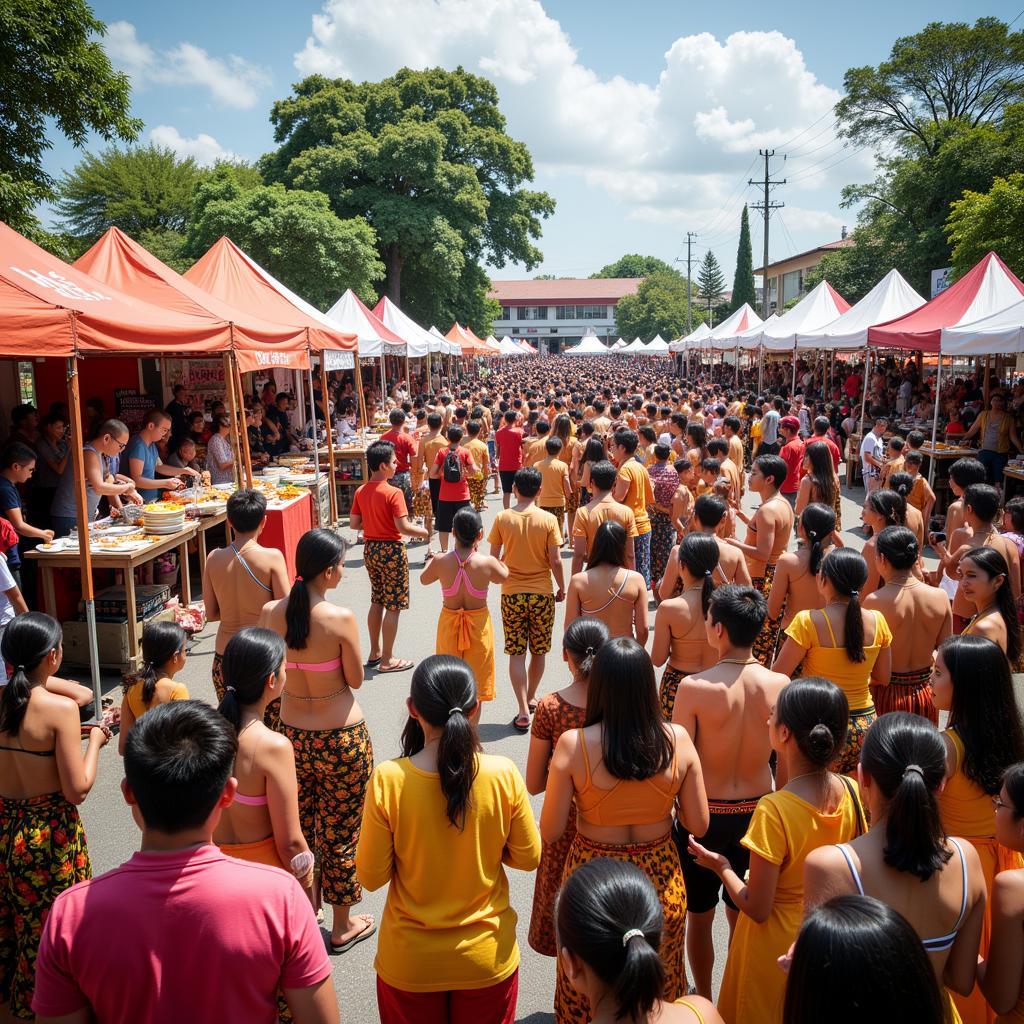ASEAN B5 refers to the five original founding members of the Association of Southeast Asian Nations (ASEAN): Indonesia, Malaysia, the Philippines, Singapore, and Thailand. These nations came together in 1967 with a shared vision of peace, stability, and cooperation in the region. This alliance has since evolved into a dynamic bloc of ten Southeast Asian nations, playing a significant role in global economics and geopolitics. But what exactly is the significance of ASEAN B5, and how does it continue to shape the ASEAN community today?
The Birth of a Vision: Forming ASEAN B5
The mid-20th century was a turbulent time for Southeast Asia. Emerging from colonialism and grappling with Cold War tensions, the region needed a unifying force. This led to the signing of the Bangkok Declaration on August 8, 1967, marking the formal establishment of ASEAN by the five founding members.
This declaration outlined the core principles of ASEAN:
- Respect for sovereignty and territorial integrity: Each member’s independence and borders were to be respected.
- Non-interference in internal affairs: No member would interfere in the domestic matters of another.
- Peaceful settlement of disputes: Disagreements were to be resolved through dialogue and diplomacy.
These principles, still central to ASEAN today, were crucial in fostering trust and cooperation among nations with diverse histories, cultures, and political systems.
From Five to Ten: The Expansion of ASEAN
The vision of ASEAN B5 extended beyond the five founding nations. Over time, ASEAN welcomed Brunei Darussalam (1984), Viet Nam (1995), Lao PDR (1997), Cambodia (1999), and Myanmar (2008). This expansion transformed ASEAN into a more inclusive regional organization, representing the diverse interests of Southeast Asia.
The Enduring Legacy of ASEAN B5
The influence of the original five members continues to resonate throughout ASEAN:
- Economic Powerhouse: ASEAN B5 nations remain the economic core of ASEAN. Their combined GDP accounts for a significant portion of the bloc’s total, driving economic growth and integration.
- Political Leadership: ASEAN B5 nations often take leading roles in shaping ASEAN’s agenda, mediating disputes, and representing the bloc on the global stage.
- Foundational Values: The principles enshrined by ASEAN B5 continue to guide ASEAN’s approach to regional and international relations.
Challenges and Opportunities for ASEAN B5
Despite the significant progress, ASEAN B5, along with the newer members, faces challenges:
- Navigating Geopolitical Rivalries: Maintaining neutrality amidst intensifying US-China competition in the region is a pressing concern.
- Narrowing the Development Gap: Addressing economic disparities within ASEAN, particularly between the original members and newer entrants, is crucial for inclusive growth.
- Climate Change and Sustainability: Collective action is needed to address climate change and promote sustainable development within the region.
Conclusion
The formation of ASEAN B5 marked a pivotal moment in Southeast Asian history. Their vision paved the way for a regional organization that has fostered peace, stability, and prosperity. As ASEAN continues to evolve, the legacy of the B5 nations, along with the contributions of newer members, will remain crucial in navigating the complexities of the 21st century and shaping the future of Southeast Asia.
FAQ
1. What does B5 stand for in ASEAN B5?
B5 represents the five founding members of ASEAN: Indonesia, Malaysia, the Philippines, Singapore, and Thailand.
2. Why is ASEAN B5 important?
ASEAN B5 laid the foundation for regional cooperation in Southeast Asia, setting the stage for economic growth, political stability, and a more unified voice on the global stage.
3. What are some of the key achievements of ASEAN B5?
Their achievements include establishing a framework for peaceful dispute resolution, promoting free trade within the region, and fostering a sense of shared identity among Southeast Asian nations.
4. What challenges does ASEAN B5 face today?
Challenges include managing geopolitical tensions, bridging the development gap within ASEAN, and addressing pressing issues such as climate change and sustainability.
5. What is the future outlook for ASEAN B5?
ASEAN B5 will continue to play a pivotal role in shaping the future of ASEAN. Their experience, leadership, and commitment to regional cooperation will be essential in navigating new challenges and seizing opportunities in the years to come.
Need further assistance? Our team at Asean Media is here to help. Contact us at 0369020373 or [email protected]. We are also located at Thôn Ngọc Liễn, Hiệp Hòa, Bắc Giang, Việt Nam, and offer 24/7 customer support. You can also find more information on our website about other Southeast Asian topics.

